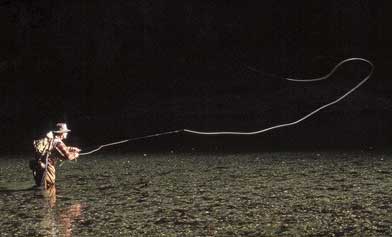
TO CATCH A FLY
By Bob Jamison
Of course, the common house fly is smaller than the horse fly. Catching one is not nearly as much fun as tying up one. How do you do that, you say? It isn’t as simple as it looks but this small bit of advice might give you a hint.
First of all, flys are amongst us for a purpose they say. Now it might be difficult to agree with that statement but fly catcher birds must think they are delicious. Also, fish seem to enjoy the offspring of green flys that do their thing.
But in the ‘fast forward’ mode, anyone that had the privilege to attend Bob Lusk’ Pond Boss Magazine conference (Pond Boss.Com) could not only learn a lot about flys but pick up a basket full of excellent details on the proper care and control of our ponds and lakes. After all, if you fly over our country you can certainly see that there are literally thousands of lakes and ponds as far as the eye can see. Each of them has a similar part of enjoyment to our lives along with problems that can be cured such as proper construction, weed control or fish balance.
One out of many facets of enjoyment is fly fishing. Please don’t confuse that with fishing for flys but “with one”. To do so, you simply inquire with an expert as to how you “tie up one”. Folks have fished with artificial lures of one kind or another for centuries. But each year the art of fly fishing and fly tying is growing as an enormous sport for both men and women.
“A River Runs Through It”, (the book or movie) is a perfect example of the beauty of our lands. It centers on wading gorgeous trout streams of the North West and fishing for the elusive Rainbow and Brown Trout that lurk behind boulders in the sparkling clear running waters of those many rivers. Whether you are skillful or lucky enough to catch a trout is one thing but the majesty of the flora and fauna and memorable visions of the landscape is almost therapeutic. And it reeks with the mental command to return.
So if you do, my advice is to consider this type of fishing. Even if you are not a fishing person, a camera will suffice nicely. Especially, it would add to your pleasure to contact a competent instructor for a few minutes of pleasurable directions. Even if you are an expert, consider a fly casting teacher such as the delightful, Brandon Powers of Temple Fork Outfitters of Dallas. He is polite, experienced in proper presentation of the fly and an expert in tying flys.
To watch Powers as he instructs you in the art of presenting (casting) the fly to an imaginary fish, it almost appears that he could be a cross between an orchestra director and a ballet dancer. His movements with that fly rod are gentle and comfortable as you learn this simple art or correct some bad habits you likely don’t realize as in the case of this writer.
The Pond Boss conference had many excellent speakers most of which are stewards of the land as all are conservationist. Each shares a suggestion that is in common with all; that is, take a kid fishing. Being outside surrounded by nature is simple as driving or walking to your nearest neighbor’s pond. But don’t forget the limitless opportunities in our salt water bays and surf.
Whether that kid (young or old) is carrying along a piece of bacon on a string for crawfish, pole and line with worms or presenting a fly to that Bass, Bream or Red Fish, it surely will be an event that can ensure enjoyment to both of you. As a likely mentor of that kid, he will not need to explain his feelings because all you need to do is look in his happy face which will clearly explain everything as he or she lands that first fish. Good luck!